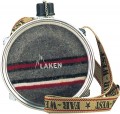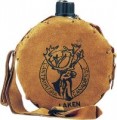Volume
Nominal (working) volume of the vessel. In fact, the largest amount of liquid that can be poured inside without problems, without filling the container “to the very cork” and without risking spilling the contents upon subsequent opening. Accordingly, the volume is indicated with a margin; most bottles and flasks allow for slightly more liquid than is nominally stated, however this is not recommended.
A capacious vessel allows you to carry more drink with you, but it takes up more space, and it will weigh (especially when filled) accordingly. Therefore, when choosing, it is worth considering the features of the planned application. In addition, certain types of flasks and bottles have their own volume requirements: for example, in classic flasks (see "Type"), the volume rarely exceeds 300 mL, and bicycle flasks hold about 600 – 700 mL, because. a larger vessel would be difficult to carry on a bike rack.
Weight
Empty container weight.
The lighter the vessel, the easier it is to carry it with you, the less excess weight you have to carry “on yourself”. On the other hand, this is of fundamental importance mainly on long trips with a lot of equipment, when “every gram counts”; and excessive lightness can adversely affect strength and reliability. Therefore, it does not always make sense to chase the smallest possible weight — especially when it comes to plastic containers, the difference between which is a matter of grams.
A separate mention in this case is the classic flasks (see "Type") — they are specially made quite weighty, because. many fans of such products consider massiveness a virtue.

